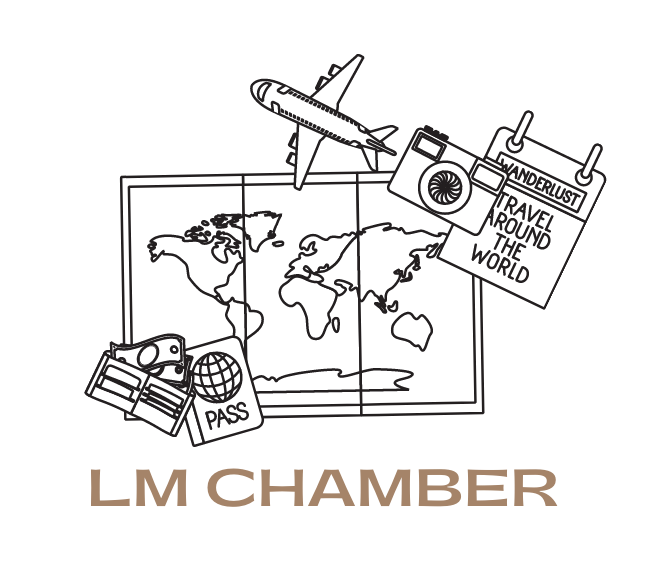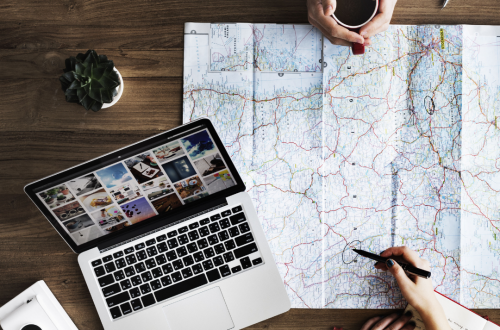
How to Deal with Jet Lag While Traveling: Effective Strategies for a Smoother Journey
Traveling across multiple time zones can disrupt the body’s internal clock, leading to jet lag. To minimize the effects of jet lag, adjusting sleep patterns before departure and staying hydrated during the flight can make a significant difference. These strategies help travelers adapt more easily to new time zones and maintain their energy levels.
Getting ample sunlight upon arrival is another effective method to combat jet lag. Exposure to natural light helps regulate the body’s circadian rhythm, allowing individuals to adjust to their new environment more quickly. Incorporating short naps strategically can also aid in recovery without interfering with nighttime sleep.
By understanding the science behind jet lag, travelers can implement practical steps to enhance their experience. With the right techniques, it is possible to overcome the fatigue and irritability that often accompany time zone changes, making for a more enjoyable journey.
Understanding Jet Lag and Its Causes
Jet lag occurs when a traveler crosses multiple time zones and their internal clock is out of sync with the local time. This disruption can lead to various temporary symptoms that affect overall well-being and travel experience.
What Is Jet Lag?
Jet lag, also known as jetlag, is a temporary sleep disorder resulting from rapid travel across multiple time zones. It occurs when the body’s internal clock, or circadian rhythm, is misaligned with the local time. This misalignment can cause significant fatigue, confusion, and irritability as the body struggles to adjust.
Travelers typically experience symptoms when flying east or west due to the quick change in time zones. The number of time zones crossed influences the severity of jet lag. For example, moving across six or more time zones generally leads to more pronounced symptoms.
How Time Zones Affect Your Internal Clock
Time zones play a critical role in regulating an individual’s internal body clock. The human circadian rhythm is primarily governed by natural light patterns and typically follows a 24-hour cycle. When a person travels across several time zones, their internal clock must adjust to the new light and dark cycles.
This adjustment can take a few days, leading to feelings of disorientation and sleep disruptions. A traveler moving from New York to London may find it difficult to sleep at the local time due to the mismatch between their internal clock and the new time zone. The greater the difference, the longer the adjustment period may take.
Common Symptoms of Jet Lag
Symptoms of jet lag can vary in intensity depending on the individual and the distance traveled. Travelers often report:
- Fatigue: A strong feeling of tiredness that can persist throughout the day.
- Confusion: Difficulty concentrating or thinking clearly.
- Irritability: Increased mood swings and emotional disturbances.
- Disorientation: A sense of being out of place or time.
Other symptoms may include insomnia, headaches, and stomach problems. Sleep disruptions are common, making it challenging to fall asleep at night. Addressing these symptoms early with proper planning and self-care can mitigate the impact of jet lag during travel.
Proven Strategies to Prevent and Minimize Jet Lag
Implementing effective strategies can significantly reduce the impact of jet lag on travelers. Focusing on sleep schedule adjustments, smart travel plans, light exposure management, and maintaining hydration can help ensure a smoother transition to new time zones.
Adjusting Your Sleep Schedule Before Traveling
Gradually shifting the sleep schedule a few days before departure can help in aligning with the destination’s local time. By going to bed and waking up one hour earlier or later each day (depending on the direction of travel), travelers can ease the transition.
For example, if traveling east, adjusting sleep times earlier will be beneficial. This method helps the body’s internal clock to prepare for the upcoming time zone changes. Keeping a consistent schedule leading up to the trip enhances the chances of minimizing jet lag symptoms.
Smart Travel Plans for Crossing Time Zones
Choosing flight times wisely can greatly influence the experience. Opting for overnight flights allows for sleeping during travel, aligning with nighttime at the destination. This provides a natural transition into the new time zone upon arrival.
It’s also advisable to take direct flights whenever possible to avoid additional stress from layovers. When planning trips across multiple time zones, selecting itineraries that require fewer dramatic changes helps maintain a more stable sleep pattern, thus reducing the likelihood of jet lag.
Managing Light Exposure for Circadian Rhythm Alignment
Light exposure plays a vital role in regulating the body’s circadian rhythm. Travelers should seek natural light during the day to help reset their internal clock. For instance, if arriving at a destination in the morning, spending time outdoors can facilitate adjustment.
Conversely, when traveling to a location where it is night, keeping lights dim and minimizing screen time can signal the body to prepare for sleep. Tools such as sleep masks and blackout curtains can enhance this effect by limiting light exposure during rest hours, promoting better sleep quality.
Staying Hydrated and Eating Healthy Meals
Maintaining hydration is essential in combating jet lag. Drinking plenty of water before, during, and after the flight helps prevent dehydration, which can exacerbate fatigue. Avoiding alcohol and caffeinated drinks before and during the flight supports hydration efforts.
In terms of meals, consuming healthy options rather than heavy, rich foods is crucial. Light meals that are high in protein and rich in complex carbohydrates can promote better digestion and energy levels. Snacks like fruits and nuts can also aid in keeping energy stable throughout the travel period.
Effective Techniques to Recover From Jet Lag
Recovery from jet lag involves a combination of strategies aimed at restoring sleep quality and realigning the body’s internal clock. Understanding how to utilize melatonin, maintain consistent sleep, engage in light exercise, and avoid certain substances can significantly enhance recovery.
Use of Melatonin and Sleep Aids
Melatonin supplements can assist in regulating the sleep-wake cycle, especially when traveling across time zones. Taking melatonin about 30 to 60 minutes before bedtime at the destination can help signal to the body that it is time to sleep.
Dosage can vary, but common guidance suggests 0.5 to 5 mg. It’s advisable to consult a healthcare professional before starting any sleep aids.
Other sleep aids like antihistamines and herbal formulations may also help, but their effectiveness varies by individual. A well-structured approach to sleep aids contributes to improved sleep quality.
Prioritizing Sleep Quality and Consistency
Creating an optimal sleep environment is crucial. This includes a dark, cool, and quiet room, which can enhance the chances of achieving restful sleep. Using blackout curtains, earplugs, or white noise machines can help in minimizing disturbances.
Maintaining a consistent sleep schedule is equally vital. Going to bed and waking up at the same time each day helps the body adjust. Gradually shifting sleep timing before a trip can also ease the transition.
Moreover, incorporating relaxation techniques such as deep breathing or meditation may improve sleep quality during this adjustment phase.
Incorporating Light Exercise and Fresh Air
Engaging in light exercise shortly after arriving at the destination can aid recovery from jet lag. Activities such as brisk walking, stretching, or yoga promote circulation and energy levels.
Fresh air can further enhance the benefits of exercise. Exposure to natural light supports the body’s circadian rhythms. Taking walks outside, particularly in the morning, can help reset the internal clock more effectively.
Aim for at least 20 minutes of light exercise daily to maintain alertness and improve mood.
Avoiding Caffeine and Alcohol After Arrival
Caffeine and alcohol can disrupt sleep patterns, making recovery from jet lag more challenging. Consuming caffeinated beverages, especially in the afternoon or evening, can hinder the ability to fall asleep.
It’s best to avoid these substances for the first few days after arrival. Opting for hydrating options, like water or herbal teas, supports recovery.
Staying hydrated helps mitigate some effects of jet lag as well. Avoiding alcohol not only promotes better sleep but also improves overall well-being during travel.
Optimizing Your Travel and Sleep Environment
Creating a conducive environment for rest can significantly mitigate the impact of jet lag. Attention to details such as sound, light, and duration of sleep can enhance the quality of respite during travel.
Supporting Rest With Eye Masks and Earplugs
Eye masks can effectively block out light, making them essential for travelers on red-eye flights. They help signal to the body that it’s time to sleep, especially in bright environments, such as airport lounges or hotels with insufficient blackout curtains.
Earplugs serve a similar purpose by dampening ambient noise that can disrupt sleep. Travelers should select high-quality, comfortable earplugs designed to fit securely, preventing discomfort during extended wear. The combination of eye masks and earplugs creates a more sleep-friendly environment, enabling deeper and more restorative rest.
Using White Noise and Noise-Canceling Headphones
White noise machines can mask disruptive sounds, providing a consistent auditory backdrop that aids sleep. Many travelers find that a low level of background noise helps block out sudden sounds that would otherwise wake them.
Noise-canceling headphones offer another solution. They can be useful on flights and in hotel rooms to minimize disturbances. Travelers can even listen to calming music or guided meditations through these headphones, fostering relaxation and improving the likelihood of better sleep.
Avoiding Long Naps and Managing Short Naps
It is advisable for travelers to avoid long naps to minimize jet lag symptoms. Long naps can interfere with nighttime sleep patterns, making it harder to adjust to local time zones.
Instead, short naps of 20-30 minutes can be beneficial. They provide a quick boost of energy without the grogginess associated with longer sleep periods. Setting a timer ensures that naps remain brief, helping travelers manage fatigue without compromising evening sleep.
Ensuring Mental Health and Reducing Anxiety
Travel can provoke anxiety, impacting the ability to sleep well. Engaging in mindfulness practices, such as meditation, can mitigate stress and promote relaxation before sleep.
Creating a pre-sleep routine helps establish a sense of normalcy. This may involve reading, gentle stretching, or deep-breathing exercises. Maintaining mental health is crucial during travel, as it directly influences sleep quality and overall well-being. Addressing anxiety proactively enhances the experience, ensuring travelers arrive at their destinations more refreshed.




